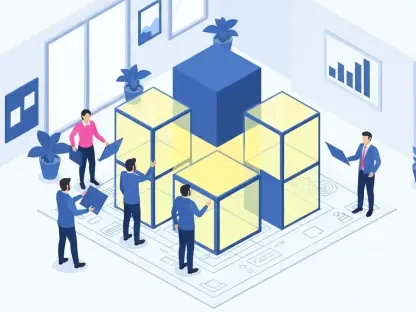Chloe Maraina, a business intelligence expert with an impressive ability to transform big data into compelling visual stories, shares her insights into the evolving dynamics of technology management. In this interview, she discusses VMware’s significant strategic shifts, the impact of licensing changes, and the broader implications for enterprises navigating today’s fast-paced digital transformation landscape.
What prompted VMware to move from a 2-year to a 3-year release cycle, and how might this affect enterprise needs?
VMware’s decision to shift to a 3-year release cadence is primarily driven by the pressure enterprises face due to Broadcom’s licensing changes and the fatigue caused by frequent upgrades. By extending the time between major releases, VMware aims to give enterprises more predictability and relieve some of the upgrade pressures. This longer cycle can help companies plan their update windows more effectively, aligning better with their internal processes and reducing disruptions.
How did customer feedback influence VMware’s decision to extend support lifecycles for VCF 9.0, and what advantages does this offer?
Customer feedback played a critical role in VMware’s decision to extend support lifecycles. Enterprises value stability and predictability in their tech environments, and longer support periods offer just that. This move provides companies with the flexibility to update on a schedule that works for them without feeling rushed by impending support deadlines. Longer support also means that businesses can maximize the ROI on their existing infrastructure before considering costly upgrades.
How have Broadcom’s licensing changes impacted VMware’s enterprise customers, particularly the new minimum licensing requirements?
Broadcom’s changes have introduced significant challenges for enterprises, especially with the new requirement to license a minimum of 72 cores per order. This has driven costs up by as much as 500% for some customers, placing strain on budgets and forcing companies to reevaluate their tech strategies. Such radical changes challenge enterprises to justify costs or find alternative solutions, significantly affecting how long-term technology investments are planned.
What reactions and strategies are you seeing from CIOs and enterprises in response to these licensing and upgrade challenges? Can you explain the concept of ‘upgrade fatigue’?
CIOs and enterprises are taking a more strategic approach amid these pressures by reevaluating their platform choices, often accelerating pilot programs to explore alternatives. The concept of ‘upgrade fatigue’ refers to the exhaustion enterprises feel from constant pressure to upgrade systems quickly, often with little strategic benefit besides staying in compliance with vendor terms. It’s making businesses more selective and strategic about which technological improvements they actually adopt.
Can you discuss the factors that led the Dutch Ministry to take legal action against VMware?
The Dutch Ministry’s lawsuit against VMware stemmed largely from a massive 85% cost increase they faced after being forced into Broadcom’s new licensing terms. Such a steep increase in costs, without a viable alternative or negotiation room, pushed the Ministry to seek legal recourse to secure migration support, underscoring the intensity of the challenges faced when vendor terms shift so dramatically without enterprise consent.
How do the new extended support timelines offer strategic flexibility for enterprises in choosing upgrade paths?
Extended support timelines allow enterprises to strategically choose when to upgrade as opposed to being forced to move in lock-step with vendor schedules. It provides a buffer to evaluate new technology or upgrade paths more thoroughly, thus avoiding rushed decisions that could result in costly mistakes. The extended timelines are a critical enabler for large enterprises who need significant time to adapt to new tech landscapes methodically.
What are the key technical improvements in VCF 9.0 that justify increased licensing costs, and how do these enhancements support CPU-constrained environments?
VCF 9.0 introduces several technical enhancements, such as Advanced NVMe Memory Tiering and vSAN Global Deduplication, which increase server consolidation and storage efficiency. These improvements offer significant performance boosts, potentially offsetting the impact of higher costs by making better use of existing resources. For CPU-constrained environments, these enhancements could mean better resource utilization and, consequently, a more balanced cost equation in the long run.
How are enterprises adjusting their virtualization strategies in response to cost pressures, and what role do alternative platforms play?
Enterprises are increasingly diversifying their virtualization strategies to mitigate cost implications. This involves a more pragmatic approach, supporting mission-critical workloads with VMware while adopting alternatives like Nutanix AHV or Azure Stack HCI for other applications. These alternatives provide robust features for general workloads, offering flexibility and resilience in their IT infrastructures under varying workload demands.
What are the long-term implications of VMware’s new release and support strategies for the enterprise market?
In the long term, VMware’s altered strategies may lead to a more stable enterprise environment, where businesses have better control over technology adoption and costs. However, this could also spur increased competition as enterprises begin exploring alternative vendors more vigorously. The emphasis on customer-centric approaches and stability will likely become increasingly pivotal in vendor selection processes and overall enterprise IT strategies.
As a seasoned technology journalist, what are your thoughts on VMware’s strategic shift?
VMware’s strategy to slow down release cycles and extend support reflects a necessary adaptation to the evolving needs of their enterprise clientele, who desire stability over rapid innovation. This shift acknowledges the reality that cost pressures and strategic planning are now central concerns for CIOs. In my view, it’s a pragmatic approach that aligns with a broader industry trend of focusing on predictable, sustainable growth rather than the relentless pursuit of rapid advancement.









